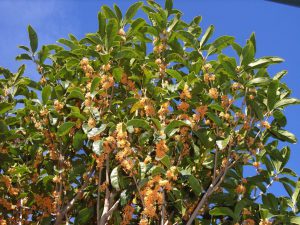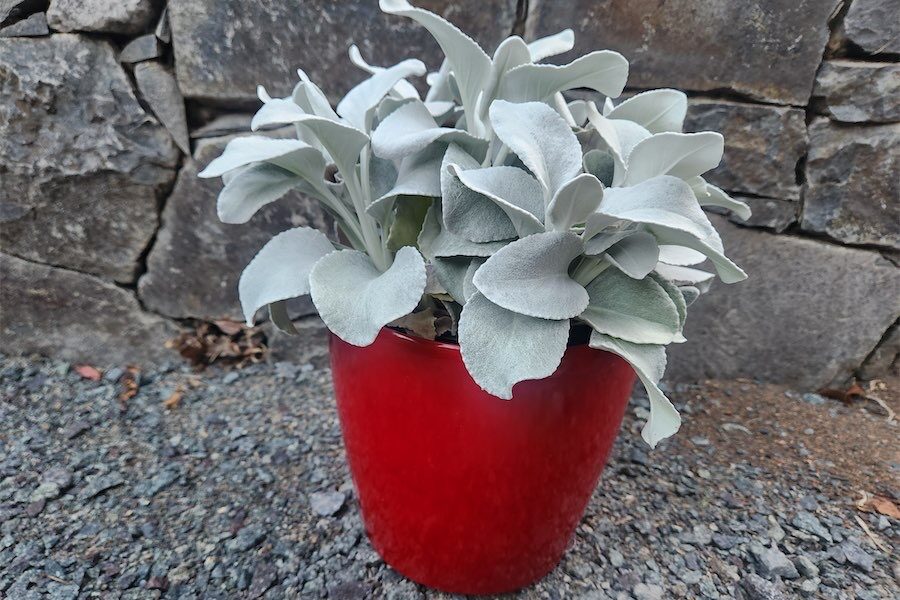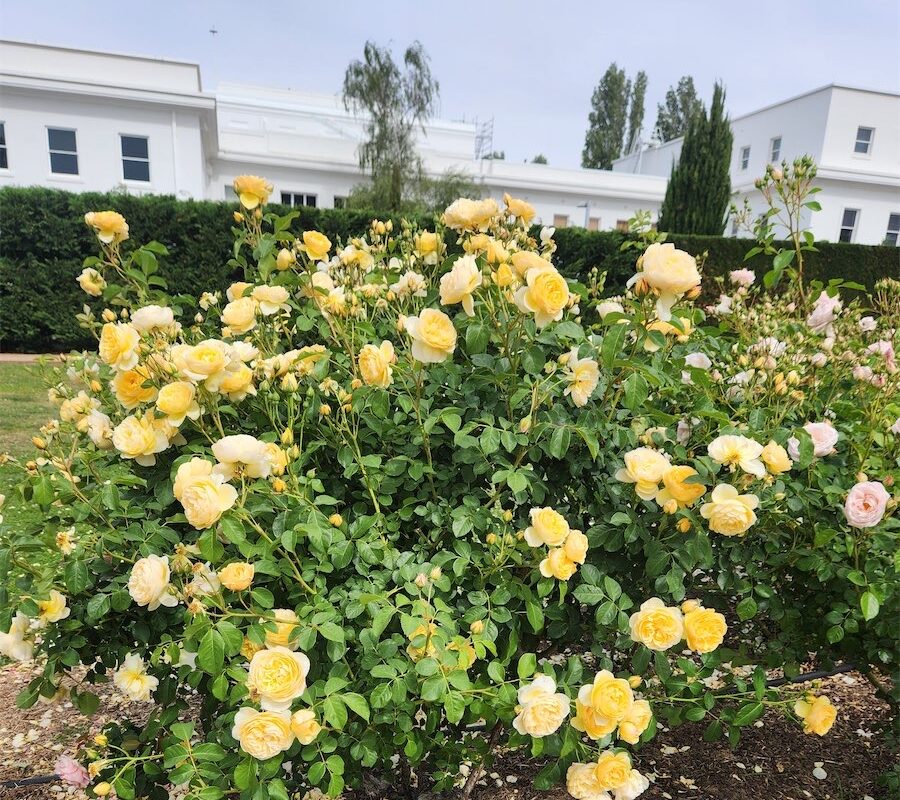THE outstanding Osmanthus fragrans is a Chinese plant that became an instant hit when introduced to British gardens in 1771 by the famous plant hunter Robert Fortune.
This Osmanthus is one of the most popular plants in Chinese gardens due to the delicious perfume of its tiny white flowers that pervade the air for a considerable distance.

The Chinese consider this plant important for its multiplicity of uses. For example, its fragrant flowers are used to scent tea, or kept in jars similar to potpourri. The flowers are used to flavour wine, make perfumes and medicines. The bark is used for dye-making and the timber is good for wood carving.
In China, its name is Gui meaning “noble” and a boy seen holding a branch represents a “noble son”. Osmanthus fragrans is also a symbol of literary merit and an emblem of studious pursuits.
What really puzzles me is that while the straight Osmanthus fragrans is available, O.f. aurantiacus is rarely sold in garden centres? Definitely worth looking for.
HERBS have been used for centuries in culinary, medicinal and decorative ways. “Strewing herbs” is an expression not often heard today, but in bygone days, before carpets and floor coverings, these were fragrant herbs literally scattered on floors to ward off unpleasant smells. The obvious ones are lavender and rosemary.

I am often asked to include a herb garden in designs, however I prefer to plant herbs at random in garden beds for companion planting and discouraging pests.
Herbs conjure up romantic images, none more so than in the writings of William Shakespeare. The fairie kingdom in “A Midsummer Night’s Dream” is a kingdom of flowers.
Shakespeare’s plays and poems abound with references to flowers; his language is rich in plant and garden metaphors. Consider The Winter’s Tale: “Rosemary and rue, seemingly and savour all winter long; grace and remembrance to both of you”.
The flowers of Shakespeare are ideal for all gardens for one very good reason – our climate. Most of our plants originate from the hot and dry Mediterranean region. Next week, I will suggest a list of Shakespearean plants suitable to make a corner of the garden a tribute to the Bard.
THE Annual Collectors Plant Fair will be held on the weekend of April 13-14. This year more than 50 nurseries will offer many rare and unusual plants for sale, and there will be a program of inspiring speakers.
To accommodate the extra nurseries, the fair has moved from Bilpin to the Hawkesbury Race Club, 1 Racecourse Road, Clarendon, NSW. It might be wise to book accommodation and a place at the speaker program.
More information at collectorsplantfair.com or call 02 4567 2026.
Cooler work…
Cooler days make it pleasant to work in the garden:
- Plant Ericas for winter colour, an ideal element for flower arranging.
- To keep cut flowers longer – for each half litre of water in the vase add two teaspoons of sugar and half a teaspoon of bleach.
- Don’t plant citrus trees in the open ground now. Wait until late spring after the worst frosts are gone.
- Too many green tomatoes for chutney? They are a fruit, so try stewing them like plums and add double cream.
- Don’t use mushroom compost near acid-loving plants such as azaleas, Daphne or native plants.
Who can be trusted?
In a world of spin and confusion, there’s never been a more important time to support independent journalism in Canberra.
If you trust our work online and want to enforce the power of independent voices, I invite you to make a small contribution.
Every dollar of support is invested back into our journalism to help keep citynews.com.au strong and free.
Thank you,
Ian Meikle, editor




Leave a Reply